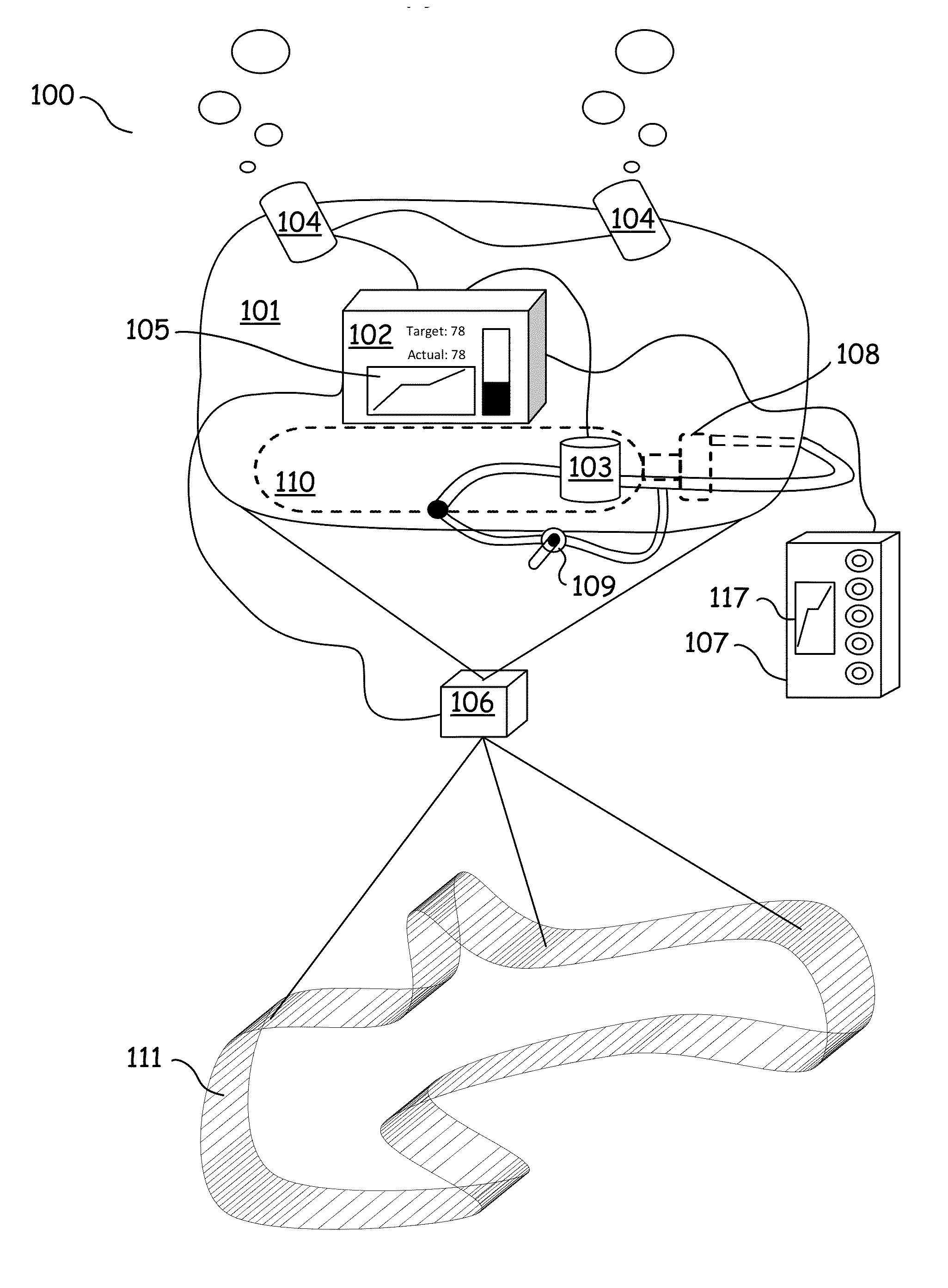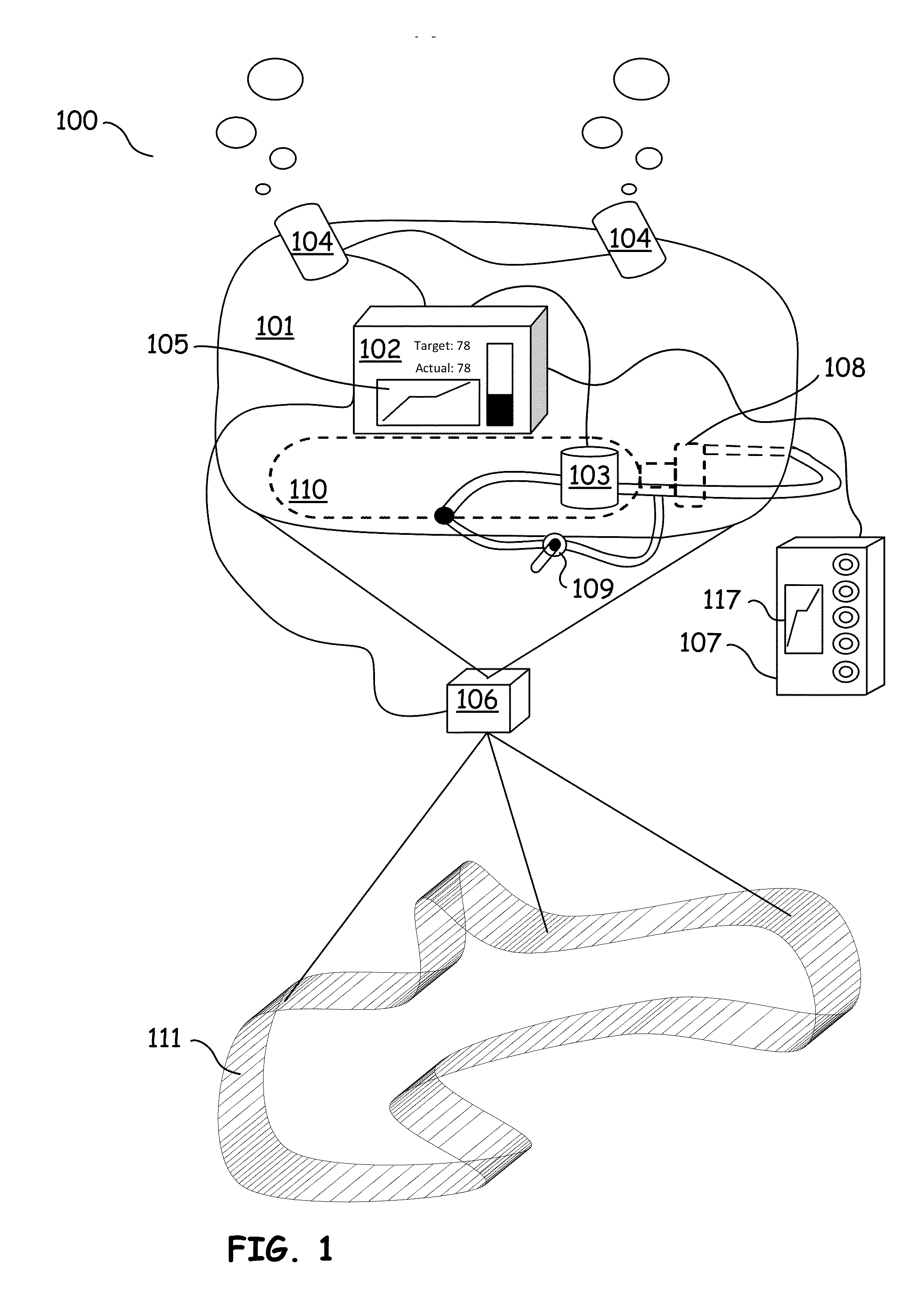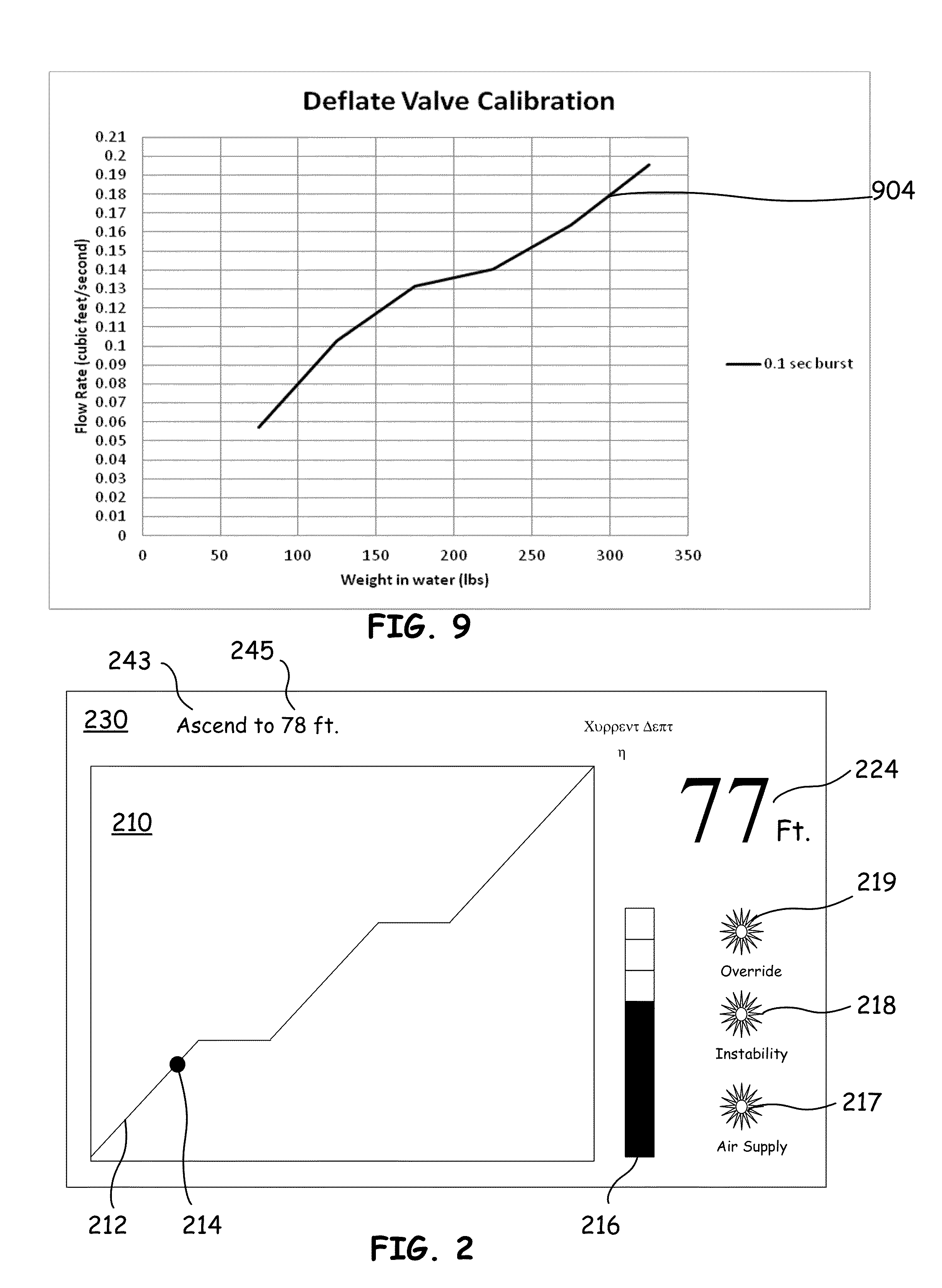Buoyancy Control System
a control system and buoyancy technology, applied in special-purpose vessels, floating buildings, transportation and packaging, etc., can solve problems such as gas loss, injury or death, and unstable conventional flexible lift bag systems
- Summary
- Abstract
- Description
- Claims
- Application Information
AI Technical Summary
Benefits of technology
Problems solved by technology
Method used
Image
Examples
Embodiment Construction
[0025]As used herein, the term “compressible fluid” refers to a gas or liquid used in flexible buoyant lift bags. In general, compressible fluids will expand or contract the volume of a lift bag depending on the pressure present at any particular depth under water. The term gas is used generally throughout this description, but it should be understood that another compressible fluid can, in many instances, be substituted for a gas.
[0026]The terms “lift bag” and “flexible lift bag” may be used interchangeably herein, unless otherwise specified or required by the context of the term, and usually refer to containers with non-rigid-walls, either partially or fully enclosed, used in buoyant lifting systems. For most flexible lift bags, the pressure inside of the lift bag is slightly higher, but approximately equal to the pressure outside of the lift bag, because the walls of the lift bag flex in response to the expansion or contraction of the gas inside, and the pressure outside of the l...
PUM
 Login to view more
Login to view more Abstract
Description
Claims
Application Information
 Login to view more
Login to view more - R&D Engineer
- R&D Manager
- IP Professional
- Industry Leading Data Capabilities
- Powerful AI technology
- Patent DNA Extraction
Browse by: Latest US Patents, China's latest patents, Technical Efficacy Thesaurus, Application Domain, Technology Topic.
© 2024 PatSnap. All rights reserved.Legal|Privacy policy|Modern Slavery Act Transparency Statement|Sitemap



